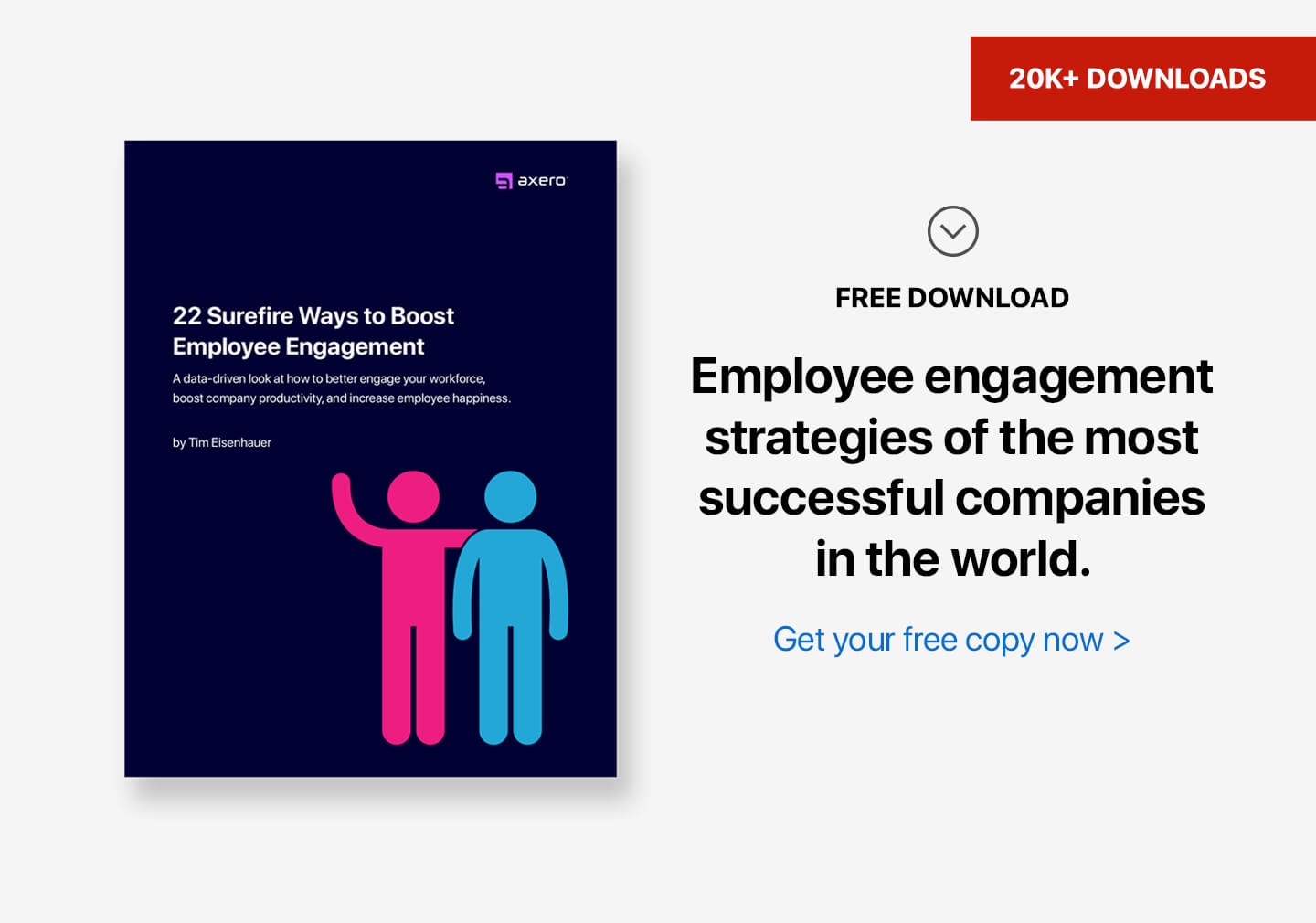Selected, Trained and Ready to…Quit? Will your recent hires make it through the “post-honeymoon’ slump? Learn employee retention tactics of the world’s most competitive workplaces.
In the last article, “Engaging Long Term Employees: Are Your Employees Feeling a 10-Year Itch? Here’s How to Scratch It” we talked about risk factors for disengagement. Long service—over ten years—was one such factor, according to Gallup. But what about before the ten-year mark? There must be peaks and valleys all along.
For many employees, the highest peak of engagement is their date of hire. Sad, I know. If you want to learn how to milk a fresh start just a little longer, read “How to Keep a New Hire Excited about the Job.”
The honeymoon phase can last from a few hours to a couple of years. It is the time when the employee feels successful for having landed the job. He is impressed with his new colleagues and feels like he’s learning a lot. The honeymoon itself isn’t a problem. The problem comes next.
Sooner or later the employee will come off the artificial high of a new job. For many people, it happens too soon. BambooHR surveyed over 1,000 employed Americans and found that 31 percent had left a job within six months of being hired.
In the best-case scenario, the honeymoon doesn’t end until the new employee is fully trained and productive. With a college grad, this can take 2-3 years. Coincidentally, this is also the time when most young employees plan to make their next move. According to Red Brick, 58% of millennials reported that they intended to stay in their current role for fewer than three years.
These are so-called trends. But is there also a way to protect your investment in your new hires? I think so. In fact, there are two: the hard way and the easy way.
The hard way is building a one-of-a-kind company that has a unique way of serving humanity, a company that becomes part of your employees’ identity. And, of course, practicing all the principles of a great workplace: empowerment, transparency, line of sight, and so on. (If you’re interested—or already going down this path—check out my book, Who the Hell Wants to Work for You?)
The easy way is one word: promotion. As long as you’re promoting your people, you can keep them indefinitely. Management consulting firm McKinsey & Company reviews employees for a promotion every two years. If you don’t get promoted, you don’t get to keep your job. I guess they don’t want a bunch of disgruntled ex-honeymooners moping around and dragging everyone else down.
Unless you’re McKinsey, it’s hard to see how you’d get everyone promoted every 2-3 years. Many large companies open internal job boards to employees to job-search their hearts out. Even if they don’t get a big raise, learning a new skill, meeting a new team, or living in a different city appeals to employees, young and mobile honeymooners especially.
If you are a small company, you probably don’t have the luxury of relocating your employees. You may not have a list of job openings for them to search through, either. However, you have another advantage you could use to keep good people. You could tailor the job to them.
Everyone at my company, Axero, creates his or her job. We start people off in one of three career tracks: software development, sales and marketing, or customer service. There are a lot of different things you can do on each track. It usually takes people at least two years to pick and master a job. Once you’ve proven yourself in a specific track, you can play around in other areas, and even make your own custom soup of job duties.
All of these tactics serve the same purpose: they make employees feel like they are going somewhere. The last thing you want your people to feel is being stuck. If there’s enough movement within the company or the current job, it will eliminate the need to switch employers. At the very least, it’ll create a temporary distraction.
Ultimately, to stay and remain productive, the employee must feel successful. A successful employee also has the best chance of being promoted or having his choice of lateral moves. And there’s one factor that contributes to success more than any other: feedback.
Here’s the advice an anonymous McKinsey consultant gave to an anonymous job applicant on caseinterview.com:
“I gave my analysts feedback daily—and they got much better, much faster because of it. The managers I had that I liked working with the most gave me feedback probably twice a week—that was one of the keys to my success.
I got someone to tell me what I was doing right and what I was doing wrong. It was immensely helpful. I was not that good when I started at McKinsey. I got better because of the feedback. If you’re not being given feedback at least once or twice a week, then ask for it…”
You heard it. Give detailed and sincere feedback to your young and enthusiastic employees daily. Not quarterly or semi-annually. Not in writing. Not publicly. Not on record. Just keep telling them one-on-one how they are doing. If you are the big boss, make sure they have someone who can do that for them.
Aside from keeping them interested and helping them grow, mentoring your new hires builds strong relationships within your company. If anything will make that honeymoon feeling last forever, it’s taking the time to mentor and guide your employees along the career path.
____
If you like loyal employees, you might like my book, because it shows you how to earn their loyalty.









